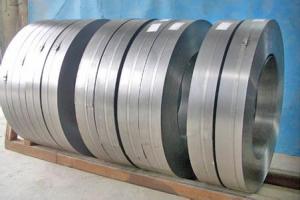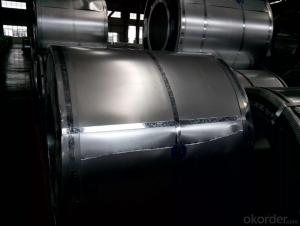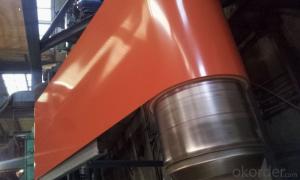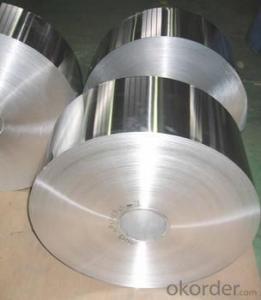Hot rolled strip
- Loading Port:
- China Main Port
- Payment Terms:
- TT OR LC
- Min Order Qty:
- -
- Supply Capability:
- -
OKorder Service Pledge
OKorder Financial Service
You Might Also Like
Hot rolled strip
1, hot rolled ordinary carbon structural steel (GB3524-83)
Hot rolled plain carbon steel with ordinary carbon structural steel as material,made of 1.80-6.00mm hot rolled strip thickness, width of 50-1200mm.
1) the main purposes
(2) grade and chemical composition of materials
Standards and grades
National standard
Quite foreign standard
Function and use
Material categories
The implementation of standards
Grade
Standard No.
Grade
Suitable for manufacturing of cold forming parts
Low carbon steel coil
Q/BQB302
SPHC
JISG3131
SPHC
SPHD
SPHD
SPHE
SPHE
SAE1006/SAE1008
SAE1006/SAE1008
XG180IF/200IF
XG180IF/200IF
Steel for general structure
GB/T912-1989
Q195
JISG3101
SS330
For general construction of buildings, bridges, ships, vehicles, etc.
Q235B
SS400
SS400
SS490
ASTMA36
SS540
Mainly used for cold rolling blank, cold-formed steel billet, welded steel pipebillet and bicycle, hardware products manufacturing.
- Q:Can steel strips be used in the production of appliances?
- Yes, steel strips can be used in the production of appliances. Steel strips are often used in the manufacturing of various appliances due to their durability, strength, and heat resistance properties.
- Q:Are steel strips suitable for electrical conductivity?
- No, steel strips are not suitable for electrical conductivity as steel is a poor conductor of electricity.
- Q:How do steel strips respond to different corrosion environments?
- Steel strips can respond differently to various corrosion environments depending on factors such as the type of corrosion, the composition of the steel, and the surrounding conditions. In general, steel strips are susceptible to corrosion, especially when exposed to moisture, oxygen, and aggressive chemicals. However, the response of steel strips to different corrosion environments can vary. In a dry environment with low humidity, steel strips are less likely to corrode significantly. They may develop a thin layer of surface rust, known as cosmetic or superficial corrosion, which does not affect the structural integrity of the steel. This can be easily removed through cleaning or light abrasive methods. In a humid environment, steel strips are more prone to corrosion. The presence of moisture in the air can lead to the formation of rust on the surface of the steel. This type of corrosion can progress over time, causing the steel strips to deteriorate, weaken, and eventually fail if not properly addressed. In marine or saltwater environments, steel strips are highly susceptible to corrosion due to the presence of chloride ions. Chloride ions can penetrate the protective oxide layer on the steel's surface and accelerate the corrosion process. This can lead to the formation of pitting corrosion, which can cause localized damage and weaken the steel strips. Certain chemicals and industrial atmospheres can also contribute to the corrosion of steel strips. Exposure to acids, alkaline substances, or corrosive gases can cause chemical corrosion, which can be highly destructive. The severity of the corrosion depends on factors such as concentration, temperature, and duration of exposure. To mitigate the effects of corrosion, various preventive measures can be taken. Coating the steel strips with protective layers, such as paint or galvanization, can provide a barrier against moisture and corrosive elements. Regular maintenance, including cleaning, inspection, and applying anti-corrosion treatments, can help prolong the lifespan of steel strips in different corrosion environments. Overall, the response of steel strips to different corrosion environments is influenced by multiple factors, and proper prevention and maintenance practices are essential to minimize the impact of corrosion and ensure the longevity of the steel strips.
- Q:What is the typical wear resistance of steel strips?
- The typical wear resistance of steel strips can vary depending on factors such as the specific type of steel used, its hardness, surface finish, and the conditions in which it is exposed to wear. However, steel strips are generally known for their excellent wear resistance, making them suitable for a wide range of applications requiring durability and resistance to friction or abrasion.
- Q:How are steel strips packaged for shipping?
- Steel strips are typically packaged for shipping by being tightly wound around a core or spool, secured with strapping or bands to prevent unraveling, and then wrapped in protective materials such as plastic or paper to shield them from moisture and damage during transportation.
- Q:Are steel strips suitable for the production of automotive body panels?
- Yes, steel strips are suitable for the production of automotive body panels. Steel strips provide high strength, durability, and resistance to impact, making them ideal for constructing automotive body panels that need to withstand various environmental conditions and potential collisions. Additionally, steel strips can be easily shaped and molded to meet the desired design specifications of different vehicle models.
- Q:What are the tolerances for dimensions in steel strips?
- The tolerances for dimensions in steel strips can vary depending on the specific requirements and industry standards. However, in general, the tolerances for width, thickness, and length of steel strips are typically specified in terms of a range or a specific measurement. For width tolerances, it is common to establish a range within which the actual width of the steel strip can vary. This range is usually expressed as a plus or minus value, indicating the maximum permissible deviation from the specified width. For instance, a common width tolerance for steel strips may be ± 0.02 inches (or ± 0.5 mm). Similarly, for thickness tolerances, there is typically a range specified within which the thickness of the steel strip can vary. This range is often expressed as a plus or minus value, indicating the maximum permissible deviation from the specified thickness. For example, a typical thickness tolerance for steel strips may be ± 0.001 inches (or ± 0.025 mm). Regarding length tolerances, the range within which the actual length of the steel strip can vary is also specified. This range is generally expressed as a plus or minus value, indicating the maximum permissible deviation from the specified length. For instance, a common length tolerance for steel strips may be ± 0.04 inches (or ± 1 mm). It is important to note that these tolerances can vary depending on the specific application, the grade of steel, and the manufacturing process involved. Therefore, it is crucial to consult the relevant industry standards, customer requirements, or the technical specifications provided by the steel strip manufacturer to determine the exact tolerances for dimensions in a specific steel strip.
- Q:Can steel strips be used in the production of railway tracks?
- Yes, steel strips can be used in the production of railway tracks. These steel strips are commonly known as steel rails and are an essential component of railway infrastructure due to their strength, durability, and ability to withstand heavy loads and constant train traffic.
- Q:How are steel strips processed for surface leveling?
- Steel strips are processed for surface leveling through a series of mechanical operations, such as rolling, stretching, and annealing. These processes help to remove any imperfections or unevenness on the surface, ensuring a smooth and even finish.
- Q:What are the different methods for painting steel strips?
- There are several different methods that can be used for painting steel strips, depending on the desired outcome and the specific requirements of the project. Some of the most common methods include: 1. Spray painting: This is one of the most popular and efficient methods for painting steel strips. It involves using a paint spray gun to evenly coat the surface of the steel with paint. This method allows for precise control over the application, resulting in a smooth and even finish. 2. Brush painting: Another commonly used method is brush painting, which involves using a paintbrush to apply the paint onto the steel strips. This method can be more time-consuming and may require multiple coats to achieve the desired level of coverage and finish. 3. Dip coating: Dip coating is a method in which the steel strips are immersed into a tank of paint or coating material. The strips are then removed and excess paint is allowed to drip off. This method is often used for coating large volumes of steel strips quickly and efficiently. 4. Electrostatic painting: Electrostatic painting involves applying an electric charge to the paint particles as they are sprayed onto the steel strips. The steel strips are grounded, which attracts the charged particles to the surface, resulting in a more even and controlled application. 5. Powder coating: Powder coating is a dry finishing process that involves applying a powdered paint to the steel strips. The strips are then heated, causing the powder to melt and form a durable and protective coating. This method is known for its durability and resistance to chipping and fading. 6. Roll coating: Roll coating is a method in which the steel strips are passed through a set of rollers that are coated with paint or coating material. The rollers evenly distribute the paint onto the surface of the strips, resulting in a consistent and uniform coating. It is important to consider factors such as the desired finish, durability, and efficiency when choosing the method for painting steel strips. The specific application and requirements of the project will ultimately determine which method is most suitable.
1. Manufacturer Overview |
|
|---|---|
| Location | |
| Year Established | |
| Annual Output Value | |
| Main Markets | |
| Company Certifications | |
2. Manufacturer Certificates |
|
|---|---|
| a) Certification Name | |
| Range | |
| Reference | |
| Validity Period | |
3. Manufacturer Capability |
|
|---|---|
| a)Trade Capacity | |
| Nearest Port | |
| Export Percentage | |
| No.of Employees in Trade Department | |
| Language Spoken: | |
| b)Factory Information | |
| Factory Size: | |
| No. of Production Lines | |
| Contract Manufacturing | |
| Product Price Range | |
Send your message to us
Hot rolled strip
- Loading Port:
- China Main Port
- Payment Terms:
- TT OR LC
- Min Order Qty:
- -
- Supply Capability:
- -
OKorder Service Pledge
OKorder Financial Service
Similar products
New products
Hot products
Related keywords




























